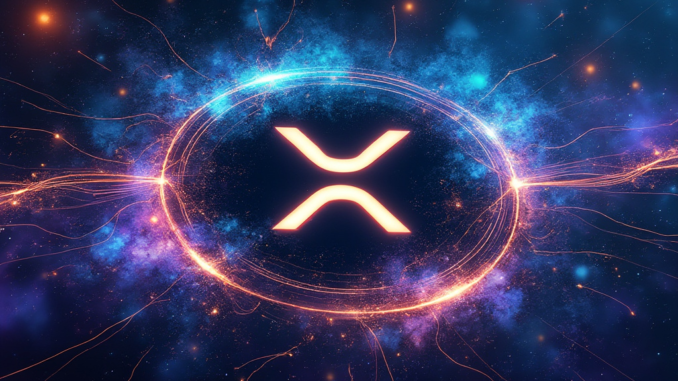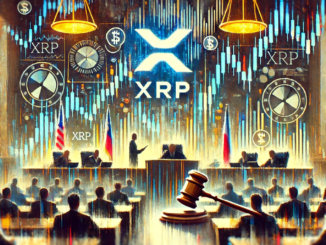

Table of Contents
Introduction: Ripple’s Aggressive Enterprising into Smart Contracts
By adding Ethereum-compatible smart contracts to the XRP Ledger (XRPL), ripple is making major changes in the blockchain scene. This calculated action seeks to grow the XRPL ecosystem and draw developers and businesspeople to investigate novel applications. Ripple is positioning itself to compete with other big blockchain systems by including smart contracts, so providing improved capability beyond simple transactions.
The relevance of blockchain smart contracts
Smart contracts are self-executing agreements automatically enforced upon particular criteria met. These agreements guarantee honest and open transactions by doing away with middlemen. On platforms like Ethereum, BNB Chain, Avalanche, and Solana, smart contracts—which have grown to be a pillar of decentralized finance (DeFi)—are extensively used in building decentralized apps (DApps).
Ripple’s development approach has changed significantly with its choice to include smart contracts into the XRPL ecosystem. Through this, Ripple hopes to open fresh opportunities for developers so they may create distributed exchanges on the XRP Ledger and sophisticated financial apps.
Growing the XRPL Ecosystem with EVM Compatibility
Ripple has created a sidechain working with blockchain company Peersyst to introduce smart contracts to the XRP Ledger. Designed to fit the Ethereum Virtual Machine (EVM), the program running smart contracts on Ethereum, this sidechain is Ripple is familiarizing developers by adding EVM compatibility, so enabling them to use Ethereum-based tools and programming languages including Solidity.
This action is supposed to increase the XRP Ledger’s appeal and draw a worldwide community of developers already acquainted with Ethereum’s development ecosystem. Ripple thinks this project will greatly improve the XRPL’s programmability, so opening the path for more creative uses.
Working with DeFi Developers: A Ripple New Era
Ripple is actively looking for cooperation with DeFi developers to help to define XRPL smart contract future. Programmers having knowledge of EVM languages have been invited by the company to investigate the opportunities presented by the new sidechain. Through interacting with the developer community, Ripple seeks to build a strong ecosystem supporting a variety of distributed apps.
Smart contracts on the XRPL sidechain also reflect Ripple’s dedication to encourage blockchain innovation. The company’s will to become a top platform for distributed finance is shown by its eagerness to work with developers.
Axelar Network’s and Wrapped XRP’s (eXRP) role
Integration of the Axelar network for cross-chain token transfers is essential part of Ripple’s approach. Axelar makes over 55 other blockchains easily compatible with the XRPL sidechain. Native asset and gas token on the sidechain, wrapped XRP (eXRP) will enable transactions and guarantee network compatibility.
This evolution makes XRP more valuable and helps to establish it as a major actor in the larger blockchain scene. Ripple is not only increasing XRP’s availability but also giving developers the tools they need to create increasingly intricate and linked applications by allowing cross-chain transfers.
Timeline and Future Prospectues: What to Anticipate
The smart contracts feature announced by Ripple will be active on the XRPL Ethereum Virtual Machine (EVM) sidechain in the next months. Ripple has said it is still in the research stage even if the precise deployment date on the XRPL mainnet is yet unknown. Nonetheless, the company has stated that it wants the XRPL to be more programmable faster; by 2025, major advancement is expected.
According to this chronology, Ripple is integrating smart contracts in a measured manner to guarantee that the technology is strong and safe before general release. The XRP community should expect little updates that will progressively improve the XRPL’s capabilities as Ripple keeps honing its plan.
The path of ## XRP Ledger from transactions to smart contracts
Long recognized for its accuracy in handling and documenting financial transactions using XRP tokens, the XRP Ledger (XRPL) Still, Ripple’s latest projects point toward increasingly sophisticated blockchain features. Ripple is turning the XRPL into a flexible platform capable of supporting many uses outside basic payments by including smart contracts.
This development of the XRPL is probably going to draw in a fresh generation of developers eager to create on a platform combining the scalability and speed of XRP with the adaptability of smart contracts. Ripple is ready to take front stage in the distributed finance scene as the XRPL ecosystem expands.
The Affect on XRP: Market Reactions and Price
The XRP Ledger’s Ethereum-compatible smart contract introduction should have a big effect on the market. Historically used for cross-border payments, XRP will now be central in a wider spectrum of blockchain uses. As the ecosystem develops, this increased utility could generate demand for XRP, so influencing price developments.
Still, the response of the market will also rely on the effective application of smart contracts and the acceptance rate among developers. Key determinants of the long-term influence on XRP’s price will be Ripple’s capacity to fulfill its promises and draw an active developer community.
Conclusion: Strategic Leap Forward of Ripple
A turning point in the development of Ripple comes from its choice to include smart contracts compatible for Ethereum into the XRP Ledger. Ripple is presenting itself as a strong rival in the blockchain market by extending the XRPL’s capabilities, so drawing developers from all around the globe.
The XRP community and the larger blockchain business are closely observing as smart contracts on the XRPL sidechain get ready for release. The success of this project might redefine Ripple’s position in the market and create conditions for fresh advancements in distributed finance.
All things considered, Ripple’s integration of smart contracts is a daring action with potentially significant effects on the XRP Ledger and the larger blockchain system. Ripple is setting the path for a more linked, programmable, and flexible blockchain future as it keeps innovating.
Disclaimer
This is just meant to be information; it is not financial or investment advise. Unexpected changes in market conditions mean that before making any financial decisions, one must carefully study and consult a professional.
For further insights, visit our cryptocurrency website
Explore more about [Bitcoin’s price movements and market trends]







Be the first to comment